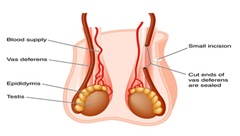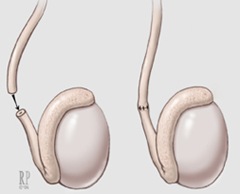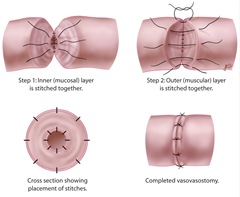What procedures are performed by urologists? Urologists are specialized physicians and experts in diseases of the urinary tract and the male reproductive system. If a physician suspects that their patient needs treatment for conditions of the ureters, adrenal glands, urethra, bladder, and kidneys, they will refer to a urologist.

(Source)
Furthermore, urologists can treat disorders related to the prostate, testes, seminal vesicles, epididymis, and penis. You can visit a urologist for many reasons. When you visit a urologist, they will diagnose and treat your condition through various urology procedures. Here are some procedures that a urologist can perform:
1. Vasectomy
This procedure is very common among men. The American Urological Association suggests that almost 500,000 men undergo vasectomies every year just in the United States of America. This surgical procedure for men acts as an effective form of permanent birth control. In this procedure, a urologist will cut the supply of sperm from reaching the semen through cutting a sealing the vas deferens, which is responsible for carrying the sperms from the testicles. This procedure is an outpatient method, so you do not have to get yourself admitted to the hospital. A urologist will take only 10 to 30 minutes to complete the procedure.
2. Vasectomy Reversal
If men who underwent a vasectomy want to have a child with their partner, they can opt for reversal surgery. This will increase their fertility and allow them to conceive a child with their partner in the traditional manner. However, there is no guarantee that a vasectomy reversal you will get back your ability to conceive a child. Various factors affect your ability to conceive after a reversal. Hence, you need to consider different factors to ensure a successful vasectomy reversal. A urologist will perform microsurgical methods to repair the vas deferens that was cut and sealed during a vasectomy.
3. Cystoscopy
With this procedure, a urologist examines and diagnoses the lining of the urethra and bladder. In a cystoscopy, the urologist inserts a cystoscope inside the urethra, so it reaches the bladder. This instrument comprises a thin, long tube with a camera and a light at the end. This method helps diagnose and treat bladder-related conditions. A urologist can also use this device to diagnose an enlarged prostate.
4. Prostate Procedures
To treat and diagnose prostate-related conditions, urologists use the following procedures:
· Prostate Biopsy
With this procedure, a urologist can remove tissue samples from your prostate so that they can be examined in the lab.
· UroLift
To treat prostate enlargement, whether matter the condition is moderate or mild, a urologist uses an invasive procedure.
· Transurethral Needle Ablation
In this procedure, urologists use radiofrequency ablation to shrink the tissues of the prostate that cause urinary symptoms by pressing the urethra.
· Transurethral Resection
Urologists rely on this invasive procedure to treat an enlarged prostate. Urologists use a special instrument known as a resectoscope to trim and seal the tissues of the prostate. They will perform this procedure if you are experiencing prostate enlargement symptoms.
· Transurethral Incision
Urologists rely on this procedure to treat benign prostatic hyperplasia or BPH. To perform this procedure, urologists insert a small and special instrument, called an endoscope, in the bladder through the urethra. Urologists will then create a small opening in the neck of the bladder on the region where it connects with the prostate. This will open the urinary channel, allowing urine to pass.
5. Ureterostomy
Urologists perform a ureterostomy to diagnose and treat kidney stones. They perform the process using a ureteroscope. This instrument is a thin and long tube that consists of a camera and a light. Urologists insert this instrument inside the urethra, passing through the bladder, and heading up to the ureter to reach the location where the kidney stone is present. If the stones are small, they remove them immediately. But if the stones are bigger, urologists first break those stones and then remove the pieces. The procedure in which a urologist breaks down larger stones is lithotripsy.

(Source)
What Should You Expect from a Urologist?
A urologist will contact your doctor and ask for notes to understand your condition in a better way. However, they will still ask you some questions to get an idea about your medical history to perform a physical examination. They may also ask you to go through some tests, such as:
- Imaging tests, such as MRI scans, CT scans, or ultrasound. This way, they can understand your condition better
- With a urine test, urologists can check for the presence of bacteria or any other cause of the disease
- With a biopsy, they can check if you have cancer or any other disease
Procedures Performed By Urologists: Conclusion
Dr. Yaniv Larish at Vasectomy Reversal NYC and Fifth Avenue Urology is highly experienced at treating urological diseases. If you are suffering from any related disease, contact us at 646-862-5500 or visit our website.



